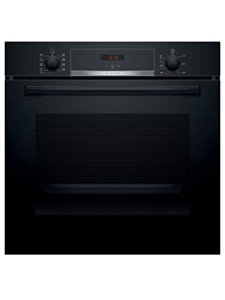The Ultimate Guide to Built-in Ovens: Enhancing Your Kitchen Experience
Built-in ovens have actually ended up being a popular option in contemporary kitchens, providing a blend of functionality, design, and benefit. Unlike conventional freestanding ovens, built-in ovens are integrated perfectly into cabinetry, supplying a streamlined appearance that can enhance the visual appeal of any kitchen. This post explores the various kinds of built-in ovens, their advantages, setup factors to consider, and maintenance tips.
Understanding Built-in Ovens
Built-in ovens are developed to be set up straight into kitchen cabinets, enabling a more tailored kitchen setup. see it here come in two main types: single and double ovens.
Kinds Of Built-in Ovens
- Single Ovens: These units use one cooking compartment, suitable for smaller cooking areas or homes where cooking needs are modest.
- Double Ovens: As the name recommends, these systems include 2 separate cooking compartments, enabling users to prepare numerous dishes at various temperature levels all at once. This is especially beneficial for large households or those who often amuse visitors.
- Steam Ovens: These ovens cook food utilizing steam, which can help maintain moisture and nutrients. Steam ovens are acquiring appeal due to their health advantages.
- Mix Ovens: These versatile appliances integrate the functions of a regular oven and a microwave, making them ideal for fast cooking and reheating.
Key Features to Look For
When thinking about a built-in oven, there are several functions that can enhance your cooking experience:
- Smart Technology: Many contemporary built-in ovens come equipped with clever technology, permitting users to control their oven remotely via mobile phone apps. Features consist of preheating the oven, changing cooking times, and monitoring cooking progress.
- Self-Cleaning Functions: Built-in ovens with self-cleaning abilities can save time and effort in kitchen maintenance.
- Convection Heating: This function distributes hot air for even cooking, making it perfect for baking.
- Security Features: Look for designs geared up with functions like cool-to-the-touch oven doors and automatic shut-off alternatives for included safety.
Benefits of Built-in Ovens
Visual Appeal: Built-in ovens provide a smooth and contemporary look that can enhance the general style of a kitchen. They can be included into cabinetry, making them less invasive than freestanding designs.
Space Efficiency: Built-in ovens optimize kitchen area, particularly in smaller sized kitchens where every inch counts. They can be put at eye level, making it simpler to keep an eye on cooking without flexing down.
Enhanced Functionality: With their sophisticated features, built-in ovens provide enhanced cooking experiences and increased performance compared to conventional ovens.
Setup Considerations
Setting up a built-in oven needs careful preparation and consideration. Here are some bottom lines to keep in mind:
- Space Requirements: Ensure that the picked oven fits comfortably into the readily available cabinet area. Step the dimensions accurately, representing ventilation and clearance requirements.
- Electrical Requirements: Built-in ovens typically require a dedicated electrical circuit. Seek advice from an electrical expert for correct setup.
- Ventilation: Proper ventilation is vital for optimum oven performance. Verify that the installation location has appropriate ventilation to prevent getting too hot and make sure safe operation.
- Professional Installation: While DIY installation may seem appealing, employing the assistance of an expert can make sure that the oven is installed correctly and securely.
Setup Steps
| Setup Step | Description |
|---|---|
| Step 1: Measure | Measure the cabinet opening for your oven. |
| Step 2: Prepare | Prepare the electrical outlet and ventilation options. |
| Step 3: Connect | Link the oven to power, guaranteeing all precaution are abided by. |
| Step 4: Secure | Secure the oven within the kitchen cabinetry, using suitable screws and brackets. |
| Step 5: Test | Run a test to ensure the oven is operating appropriately. |
Maintenance Tips
Regular maintenance can extend the life of your built-in oven and ensure ideal efficiency. Here are some maintenance suggestions:
- Clean Regularly: Wipe down the oven outside and clean the interior regularly. Usage self-cleaning functions where offered.
- Examine Seals: Ensure that door seals are intact to keep performance and cooking performance.
- Display Performance: Pay attention to how your oven functions-- if you discover unequal cooking or uncommon noises, it may require professional servicing.
- Follow Manufacturer Guidelines: Always comply with the maintenance guidelines offered by the maker. This can assist prevent issues and guarantee that warranties stay valid.
FAQs about Built-in Ovens
What is the difference between a built-in oven and a freestanding oven?
- Built-in ovens are integrated into kitchen cabinetry, providing a streamlined look, while freestanding ovens are standalone appliances that can be put throughout the kitchen.
Do built-in ovens need more maintenance than routine ovens?
- Not necessarily. Upkeep depends on usage and cleaning practices more than the type of oven. Routine care is essential for all ovens.
Can I set up a built-in oven myself?
- While it is possible to install a built-in oven yourself, it is suggested to employ a professional to guarantee safe and precise installation, especially regarding electrical requirements.
What are the typical expenses of built-in ovens?
- Costs can vary substantially based upon brand name, features, and specs. Standard models might begin around ₤ 800, while high-end designs can surpass ₤ 3,000.
Are built-in ovens energy-efficient?
- Numerous modern built-in ovens are created to be energy-efficient. Look for models with an ENERGY STAR certification for the best efficiency.
In conclusion, built-in ovens are an outstanding addition to any contemporary kitchen, combining looks with performance. By understanding the various kinds of built-in ovens, their functions, and the associated installation and upkeep requirements, house owners can make an informed choice that improves their cooking experience and total kitchen design. As cooking technology progresses, built-in ovens are likely to play an integral function in the future of home kitchens, ensuring tasty meals are prepared with ease and benefit.

